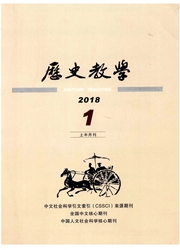

 中文摘要:
中文摘要:
19世纪中叶后,由于西方入侵中国、太平天国等农民起义打击,内忧外患、威权日衰的清廷,把军事、交通等现代技术的引入,视为稳定政权、抵御外侮的必要手段。因此,近代中国最初的铁路建设,并非完全是经济发展或工矿业需求的产物,这是近代中国现代化进程中一个明显特征。尽管清政府建设铁路体系的出发点不在经济需求,但除个别边疆线路所具有的国防意义外,多数铁路的建设自然沿袭旧有官道、驿路或商路,一些线路则因受制于出资国家的利益考虑而选择了以沿海港口城市为终点。由此,华北区域的工商业发展开始了受制于外贸、以东部带动西部的时代,以行政中心为商业终级或中级市场的传统商业网络,渐次演变为以东部港口城市为终极市场、以具有铁路交通条件的各行政中心为中级市场的新型商业网络。华北区域工商业发展及城市变动的新格局,反过来也推动以铁路为骨干的近代交通体系由东向西的梯级建设。
 英文摘要:
英文摘要:
Since the mid-19th century, confronted with the external Western invasion and the domestic Taiping and other peasant uprising, the declining and embarrassed Qing authority began to consider the introduction of modern military and transportation technology as an indispensable way to maintain a stable regime and to resist foreign aggression. Therefore, the original railway construction in modern China was not entirely the result of economic development or mining and industrial demand, which made up an obvious feature of China's modernization. Although it was not on the side of economic needs that the Qing authority initiated the construction of a railway system, ex- cept for very few border lines which were of national defense significance, it turned out that most railways naturally followed the old Guan Dao, post roads, or trade routes, and some other lines chose to end at certain coastal port cities due to the consideration of relevant funding countries' interest. As a result, the commercial and industrial development in North China became subject to foreign trade and the eastern region began to take the wheel over the western region, which led to the progressive transformation from a traditional commercial network with those administrative centers as ultimate or intermediate markets to a new-type network with the eastern port cities as the ultimate markets and the administrative centers enjoying railway links as the intermediate markets. The industrial and commercial development in North China and the new pattern of its urban changes, in return, promoted the cascading construction of a modern transportation system from east to west, in which railways functioned as the backbone.
 同期刊论文项目
同期刊论文项目
 同项目期刊论文
同项目期刊论文
 期刊信息
期刊信息
